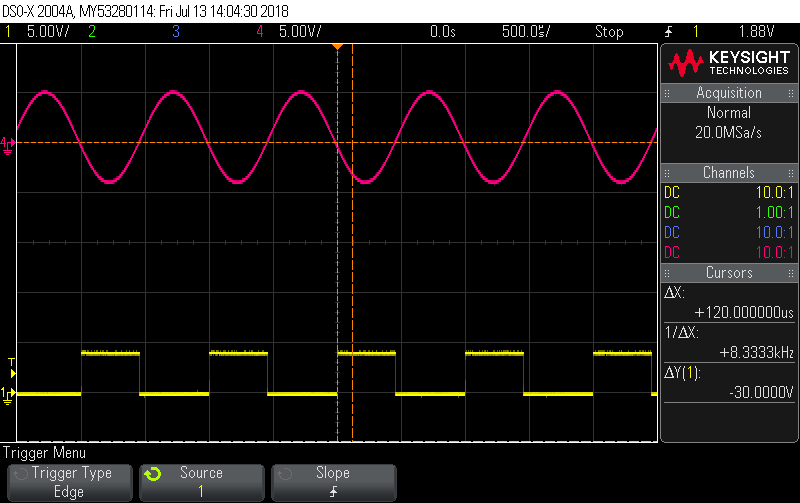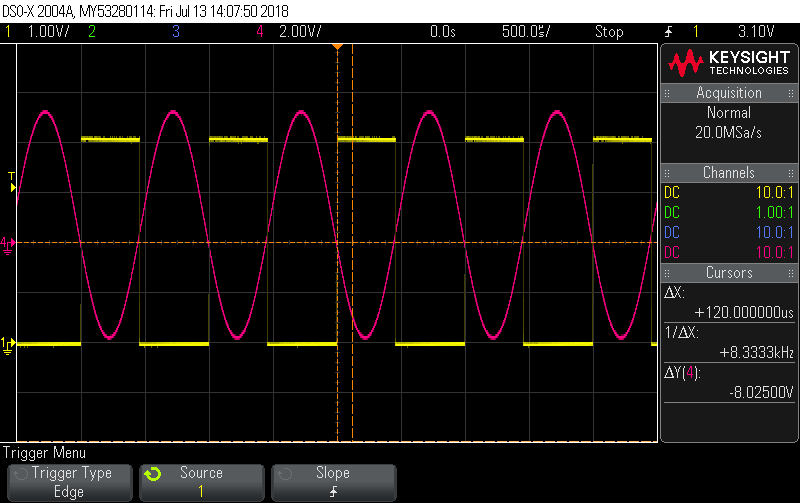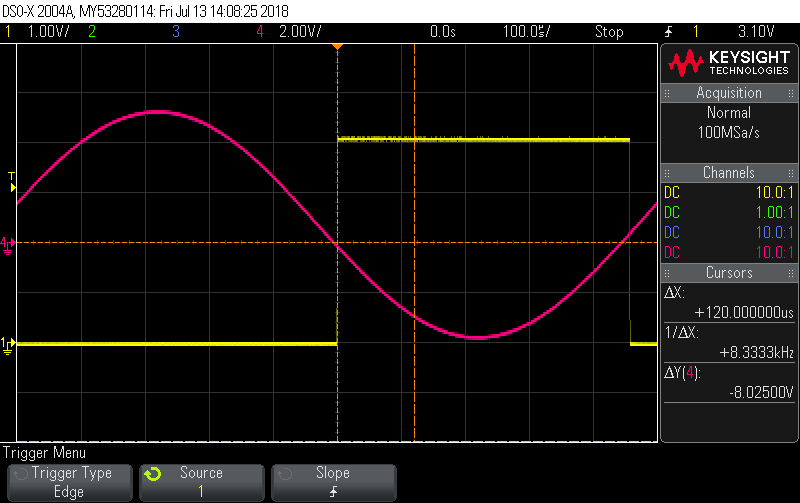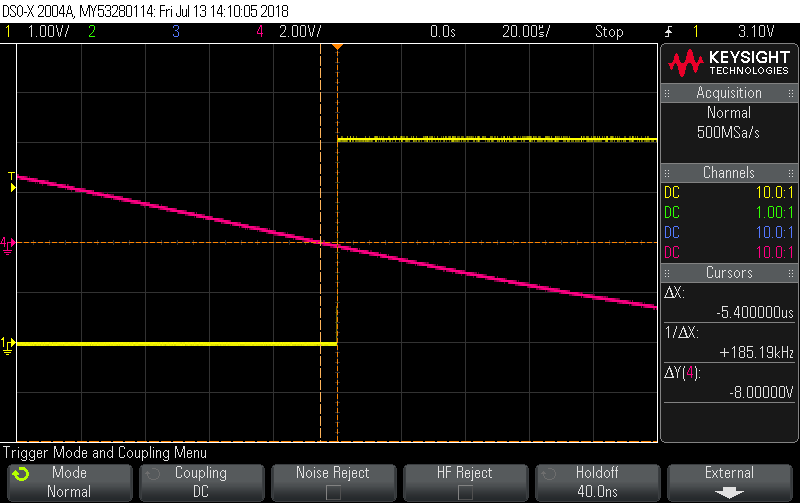Hi,
I am referring to LM1815 Rev F of the datasheet found here.
If I connect pin 14 to ground, will it disable the one-shot trigger shown in Figure 17? And the output at pin 12 will align to negative and positive going VR input signals? pin 12 output pulse width will vary based on the frequency of the VR input?
If I connect pin 14 to R, C as shown in Figure 17, will it then enable the one-shot trigger? In this case, will the output at pin 12 align to negative going VR input signal and exhibit a pulse with set by equation 2? and pulse width will not change with frequency of the VR input?
thanks.






